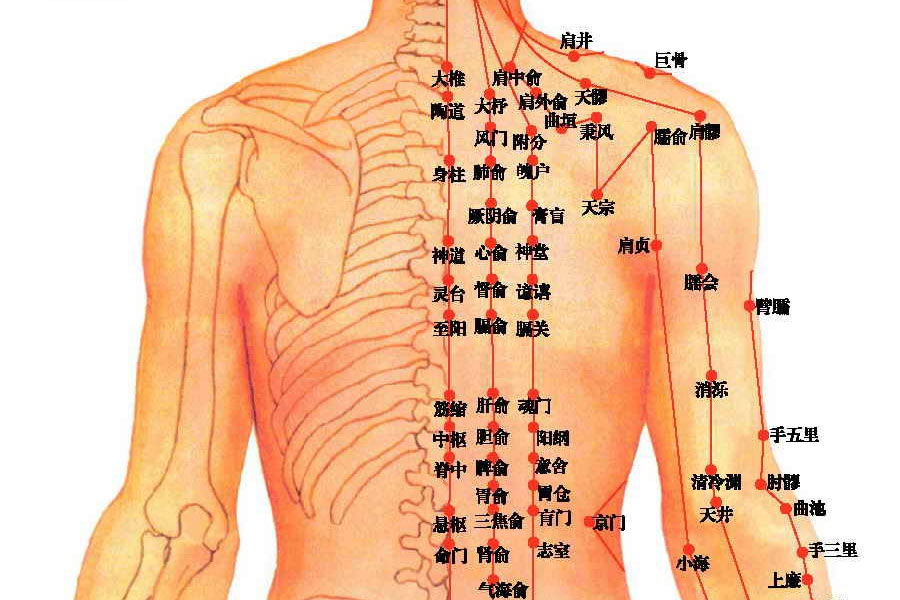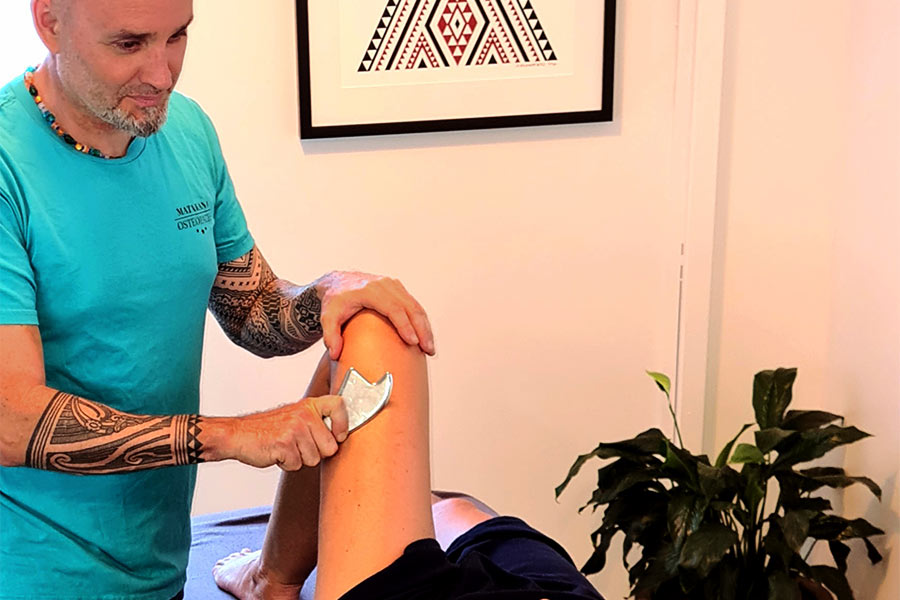Osteopathy for Adults
Osteopaths view the whole person as a complete integrated unit. They look to treat pain and dysfunction by examining areas such as poor posture, joint restriction, tendon inflammation, muscle tension and fascia stiffness. They then use specific ‘hands on’ techniques like massage, joint mobilisation, muscle stretches and fascial releases to help the body’s natural reparative processes restore equilibrium and reduce pain.
Osteopathy was founded in America by Dr Andrew Still (1874). Since then it has grown in popularity. In New Zealand, like other countries worldwide the osteopathic profession is now governed under legislation which recognises it as valid form of healthcare. These laws help ensure public safety as only fully trained and registered clinicians are permitted to practice osteopathy.
Cupping
While mainly thought of as a traditional Chinese method of treatment, its use is recorded as far back as Ancient Greece and Egypt. Cupping involves placing a vacuum cup on the body, this creates a negative pressure which stimulates and stretches the underlying tissues. This is thought to create positive blood flow and break fibrous adhesions that may have formed within the muscle fibres. Cupping has received more media attention recently since Olympic gold medallist swimmer Michael Phelps endorsed its use.
Acupuncture
The use of acupuncture dates back at least 2,500 years. However, only since the 1970s has its use become more widespread in the west. As more research has been added, the understanding of how it influences the body has evolved.
Western medical acupuncture is based on a growing catalogue of recent research. Current research points to the theory that needles stimulate specific nerve fibres in the body to reduce pain by influencing neurological pathways in the spinal cord and brain. It promotes local blood vessel dilation and stimulates the release of ‘healing and immunity’ hormones such as white blood cells and anti-bodies into the deeper tissues. It may also increase Endorphins and Serotonin which collectively are associated with reducing pain, regulating sleep, appetite and producing an improved sense of wellbeing or happiness.
Sports (Kinesiology) Taping
Sports tape (K Tape) was originally invented for Sumo wrestlers by a Chiropractor called Dr Kenzo Kase over 25 years ago. It has since grown in popularity and has been used by people from all walks of life, most notably by the professional footballer, David Beckham. It provides support and stability for muscles and joints while still allowing a comfortable range of motion. Pain sensors lie in the first two layers of the skin. It is thought the tape lifts the superficial layer allowing increased blood flow and reducing inflammation and pain. It can be used to support issues such as poor posture, damaged ligaments, unstable joints and pregnancy posture pain. Nick has undertaken additional training in sports taping and the basic principles can easily passed to patients to so they can tape themselves at home.
Gua Sha Massage
In Asia ‘Gua Sha’ dates back over 2000 years, when stone tools were used to help massage the body in the treatment of pain and illness. Gua means 'scrape' and Sha means 'sand' in Mandarin. The technique involves a smooth-edged tool applied over oiled skin at a comfortable pressure. Originally it was considered a full-body treatment, however in the West it has been popularised as beauty therapy facial technique. Modern research suggests Gua Sha can help encourage blood flow, reduce inflammation, stimulate lymphatic drainage, create a positive immune response, and suppress pain. Today Gua Sha is used by World Class professional athletes such as Annie Thorisdottir who is the 2x Cross-fit Games Champion.
Electroacupuncture
Electroacupuncture (EA) puts a mild electrical impulse into acupuncture needles that are inserted into the body. Research suggests this activates additional neurological pathways in the spinal cord and brain which are responsible for pain inhibition. Electroacupuncture is also thought to promote the release of beneficial chemicals and hormones to the injury site. However, it may influence a larger area and have a more concentrated effect than just needles alone. Electroacupuncture is most useful in cases of chronic pain such as tendon injuries or chronic pain syndromes. Patients typically report a mild tingling sensation during treatment.
Vibration Therapy
Vibration therapy involves the application of a handheld device that transmits vibrations of certain intensity and frequency to the body. It is thought this may increase blood flow and lymphatic drainage at the injury site, helping the healing process occur more quickly and efficiently. Perhaps the most relevant application of vibration therapy is in the breaking down of scar tissue within the body. It is theorised the vibrations disrupt the structural bonds within scar tissue and encourage the body to reorganise the muscle fibres appropriately. Vibration therapy has been used by many players in the National Basketball Association (NBA) such as the professional athlete Karl Anthony Towns.
Exercises / Stretches
We prioritise supporting our clients to have the appropriate tools and knowledge to look after themselves and help prevent further injury. For each patient we analyse posture and anatomical movement to determine how best to help. We can prescribe stretches and strengthening exercises to improve posture and overall body functionality; helping you look after your body. Nick and Felice have both undertaken additional training in Pilates, while Nick has also completed numerous physiotherapy courses in strengthening and rehabilitation.
Strength & Core Stability Training
We know gyms can be intimidating, confusing places, however we can make it easier for you to achieve your fitness goals. Nick has over 25 years of training experience in the field of strength and conditoning. He is passionate about his own fitness and enjoys helping others improve their strength and core stability. Utilising his findings from the osteopathic assessment process, Nick can tailor an exercise-program that is based on individual needs; supporting you to confidently become stronger and healthier in the long run.
Osteopathy for Babies
Osteopaths treat babies that are irritable or uncomfortable. During birth enormous pressures are put on a baby’s body which may give rise to difficulties with neck movement, problems with normal baby functions like feeding, burping and settling. By identifying tensions and strains in a baby's body the baby osteopath can gently apply specific, soft touch techniques to release them.
Osteopathy for Pregnancy and Post-partum
The body is amazing at adapting to demands placed upon it during pregnancy and birth. However, these changes may give rise to pain in areas such as the back, groin, shoulders neck and possibly headaches. Osteopaths identify and treat the areas of dysfunction to help support the mother in her pregnancy and to help her to be comfortable and relaxed as she cares for her baby once it is born. Osteopaths are able offer postural advice relating to breastfeeding, baby positioning and wearing, and post-partum postural support and strengthening.











































